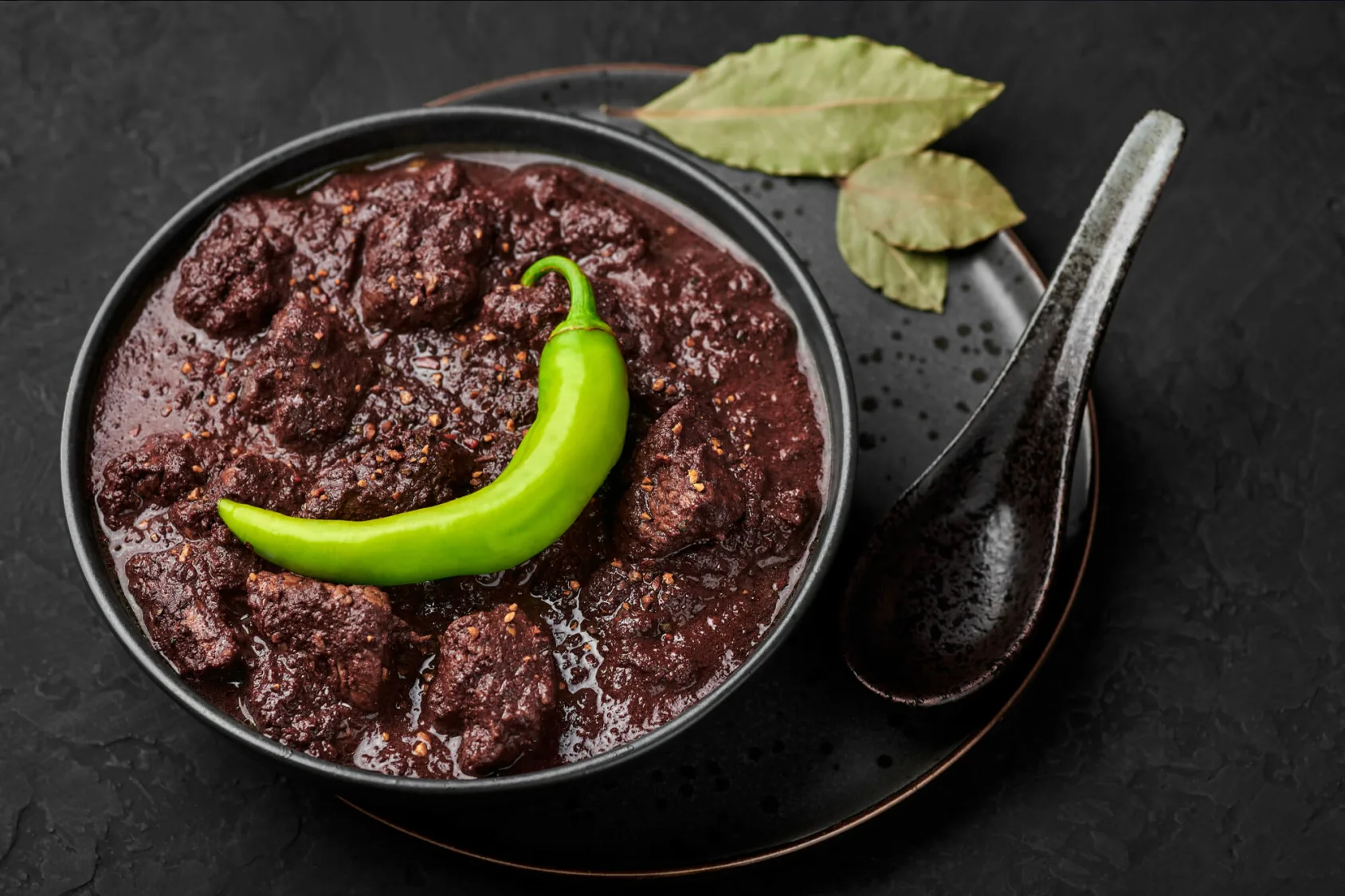
Dinuguan
A savory stew made with pork and pork blood, often served with rice cakes (puto).
Ingredients
- •Pork meat
- •Pork blood
- •Vinegar
- •Garlic
- •Chili peppers
Instructions
Cook pork
Saute garlic and cook pork until brown.
Simmer
Add pork blood and vinegar, simmer until thick.
Dinuguan is a rich, savory Filipino stew that might challenge some diners with its unique main ingredient - pork blood. This deeply flavorful dish combines tender pork meat with a thick, dark gravy made from pig's blood, vinegar, and spices. While its appearance has earned it the playful nickname "chocolate meat" among foreigners, locals know it as a hearty, satisfying dish that showcases Filipino cuisine's resourcefulness and no-waste philosophy.
The dish's origins trace back to the Spanish colonial period when Filipinos working in wealthy Spanish households would receive less desirable parts of butchered animals as payment. Through culinary ingenuity, they transformed these ingredients into delicious dishes like dinuguan. The name itself comes from the Tagalog word "dugo," meaning blood, with the suffix "-an" indicating it's where something is placed.
Making dinuguan requires careful attention to detail. The process begins by sautéing garlic and pork until browned, then adding vinegar, which helps preserve the blood and adds tanginess. The pork blood is carefully stirred in and simmered until it thickens into a rich gravy. Chili peppers add a subtle heat that complements the dish's robust flavors. The key to perfect dinuguan lies in achieving the right consistency - not too thick or too thin - and ensuring the blood is fully cooked without curdling.
While the basic recipe remains consistent, regional variations exist throughout the Philippines. Some versions include offal like intestines and ears, while others stick to lean meat. The level of spiciness varies by region, with some areas preferring it mild and others adding generous amounts of chili. Some cooks add coconut milk for a creamier texture, particularly in the Bicolano version.
In Filipino dining culture, dinuguan is traditionally served with puto (steamed rice cakes), whose subtle sweetness perfectly balances the savory stew. It's a popular dish during fiestas and special occasions, though it's also commonly found in casual eateries and home kitchens. Some enjoy it as a hearty breakfast, while others prefer it as a main dish for lunch or dinner.
From a nutritional perspective, dinuguan is high in protein and iron, thanks to its blood content. However, it can be quite rich and high in cholesterol, so moderation is key. Those with dietary restrictions should note that the dish contains pork and blood, making it unsuitable for certain religious or dietary preferences. The vinegar used in cooking helps make the dish more digestible and adds beneficial probiotics. For those trying it for the first time, it's worth noting that while the concept might seem unusual to some, the taste is surprisingly mild and savory, similar to other rich meat stews.
